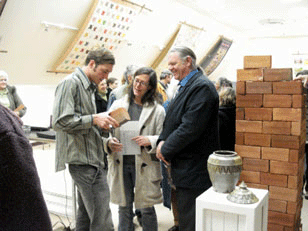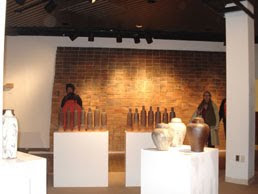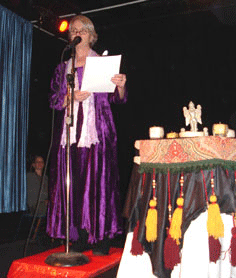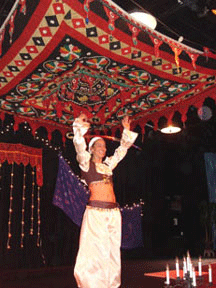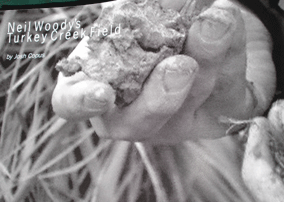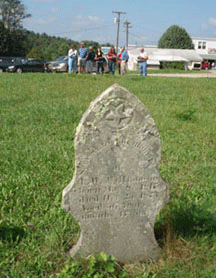 ~ The following originally appeared in the Floyd Press on February 22nd.
~ The following originally appeared in the Floyd Press on February 22nd.I don’t play a musical instrument or a sport, but I dance. The small Massachusetts beach town I grew up in was home to The Surf Ballroom, a club with a big dance floor that hosted musical acts, some as well known as Sonny and Cher. Since I was a Surf-going teenager, dance has been an important part of my life, which is why I was thrilled when I learned in 2004 that Dance Free was coming to Floyd.
Local artist, dancer, and founder of Floyd’s Dance Free, Lora Giessler tells me that Dance Free was born in Boston, Massachusetts, in the late 60’s. Its purpose of providing a safe, smoke and alcohol free atmosphere for self expression through free style dance remains the same today.
“About 9 years ago, Olivia, a beautiful dancer and teacher from Paris and Boston did a spontaneous workshop with a group of us in Floyd that had been in a creative improv class together,” Lora told me. "He spoke of Dance Free New England. I was so inspired by this form of Dance and by him that I traveled to Boston to find out what it was all about,” she continued.
I was familiar with Dance Free from the book “Tuesdays with Morrie,” written by Mitch Albom, the bestselling author who also wrote “The Five People You Meet in Heaven.” Morrie Shwartz, the man behind the book’s title, had been Albom’s college professor and was a Dance Free regular in the early days of its existence. Ironically and sadly, Morrie contracted Lou Gehrig’s disease (ALS), a fatal neurological disease that destroys muscle, and had to give up dancing.
In his book, Albom writes of Morrie’s winning spirit and how it shone throughout his decline into ALS. About Morrie’s involvement with Dance Free, Albom says: “They had flashing lights and booming speakers and Morrie would wander in among the mostly student crowd, wearing a white T-shirt and black sweatpants and a towel around his neck, and whatever music was playing, that's the music to which he danced. He'd do the lindy to Jimi Hendrix … Once, he brought a tango tape and got them to play it over the speakers. Then he commandeered the floor, shooting back and forth like some hot Latin lover. When he finished, everyone applauded.”
The original Dance Free, which actually took place in Cambridge, a subway stop away from downtown Boston, was only 24 miles from my hometown and yet, I never went. By the time I read “Tuesday’s with Morrie,” I lived in Virginia and was two decades too late to see Morrie dance.

I remember how excited Lora was when she got back from her trip to Boston, where she experienced Dance Free first hand. I thought of the scene from Albom’s book as we mused together about how much fun it would be to have a Dance Free in Floyd. But it didn’t happen then.
Several years after Lora’s trip, Floyd resident Maria Becke approached Lora and expressed her interest in helping to bring Dance Free to Floyd. Maria, a certified DansKinetics instructor with disc jockeying experience, offered to DJ the dances. Arrangements were made to host it once a month at the Winter Sun Music Hall, where the spacious hardwood floor has just the right slip and slide for a dancer’s feet.
Since the winter of 2004 on the fourth Friday of each month dancers twirl, whirl, shake, rattle and roll – sometimes with a partner but mostly alone – to the wide variety of music that Maria plays. Maria’s selections are representative of many kinds of music with influences from all corners of the world. She knows I love it when she throws an old Motown standard into the mix, a reggae favorite, or an occasional disco hit. Sometimes she can’t help herself and hops down from the stage where she serves up the mix and dances with us.
I’m grateful to have such an outlet for creative movement right here in Floyd. I love to dance the way my husband loves to play soccer, and when Dance Free night rolls around, I treat it like a favorite sport and as if I was preparing for a marathon. I rest during the day and when the time comes to go, I fill up a jug of water and fix myself a high protein snack. I want to make sure I can keep up my energy level because I know once the Dance Free music starts I won’t sit down until it stops.
Last year I wrote about Dance Free here at Loose Leaf: “With my eyes closed and slightly dizzy from spinning, I could have been back at The Surf, dancing in 1969,” I wrote.

